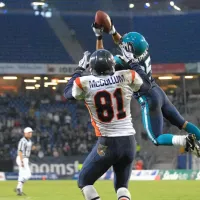How education and upbringing influenced the life of Will Rogers. A timeline of key moments.
Will Rogers, born a citizen of the Cherokee Nation, was a celebrated American vaudeville performer, actor, and humorous social commentator, often called "Oklahoma's Favorite Son." He achieved immense popularity and became the highest-paid Hollywood film star by the mid-1930s. Rogers traveled the world extensively, starred in 71 films, and penned over 4,000 nationally syndicated newspaper columns, establishing himself as a leading political wit. His life tragically ended in 1935 in a plane crash in Alaska alongside aviator Wiley Post.
1901: Departure for Argentina
Near the end of 1901, at the age of 22, Will Rogers and a friend, Dick Parris, left home with the intention of working as gauchos in Argentina.
May 1902: Arrival in Argentina
In May 1902, Will Rogers and his friend arrived in Argentina, where they spent five months attempting to establish themselves as ranch owners in the Pampas.
1904: Return to the United States
In 1904, Will Rogers returned to the United States after working in Australia and appeared at the Saint Louis World's Fair. He then started showcasing his roping skills on the vaudeville circuits.
April 27, 1905: Roping a Steer at Madison Square Garden
On April 27, 1905, Will Rogers was at Madison Square Garden when a wild steer escaped into the stands. He successfully roped the steer, gaining front-page attention and a contract with Willie Hammerstein to perform on the Victoria Roof.
1908: Marriage to Betty Blake
In 1908, Will Rogers married Betty Blake, and they had four children together.
1911: Delayed Reconciliation with Father
Clement's death in 1911 precluded a full reconciliation between him and Will. This occurred after Will had achieved acclaim in vaudeville.
1911: Purchase of Ranch in Claremore, Oklahoma
In 1911, Will Rogers purchased a 20-acre ranch near Claremore, Oklahoma, for $500 an acre, planning to use it as his retirement home.
1911: Purchase of Land for Retirement Home
In 1911, Will Rogers purchased the site in Claremore for his future retirement home, which later became the Will Rogers Memorial Museum.
1911: Death of Clement V. Rogers
In 1911, Will Rogers' father, Clement V. Rogers, passed away. Rogers County, Oklahoma, is named in honor of him.
1916: Featured Star in Ziegfeld's Follies
By 1916, Will Rogers became a featured star in Ziegfeld's Follies on Broadway. Rogers evolved from a "Ropin' Fool" to a "Talkin' Fool", incorporating political satire and witty commentary on current events into his performances, demonstrating his remarkable skill for improvisation.
1926: European Tour Financed by The Saturday Evening Post
In 1926, The Saturday Evening Post financed a European tour for Will Rogers in return for publication of his articles. Rogers visited numerous European capitals, met with international figures and common people, and reflected a fear that Europeans would go to war again, recommending isolationism for the United States.
1928: Mock Presidential Campaign
In 1928, Will Rogers mounted a mock campaign for the presidency to prove that all campaigning was "bunk." He ran as the "bunkless candidate" of the Anti-Bunk Party in Life magazine, promising to resign if elected and caricaturing campaign politics weekly from Memorial Day through Election Day.
1931: Travels to Asia
In 1931, Will Rogers traveled to Asia to perform.
1934: Globe-Girdling Tour
In 1934, Will Rogers made a globe-girdling tour and returned to play the lead in Eugene O'Neill's stage play Ah, Wilderness!.
1935: Declined Role in Movie Version of 'Ah, Wilderness!'
In 1935, Will Rogers tentatively agreed to star in the movie version of "Ah, Wilderness!", but declined due to concerns about a fan's reaction. He and Wiley Post then made plans to fly to Alaska that summer.
1944: Death of Betty Blake
Will Rogers's wife, Betty Blake, passed away in 1944.
Mentioned in this timeline

Google LLC is a multinational technology company specializing in online...
California is a U S state on the Pacific Coast...

College football is a popular amateur sport in the United...

News encompasses information about current events disseminated through various media...

Football is a family of team sports primarily involving kicking...

Seattle is the most populous city in Washington state and...
Trending

3 months ago ATP Basel Day 2 Predictions: Wawrinka vs Kecmanovic, Mpetshi Perricard vs Fonseca
3 months ago Lindsey Halligan's Signal exchange with Anna Bower revealed, leading to controversy and publication.

7 months ago Mirra Andreeva vs. Yulia Putintseva at French Open; Putintseva Advances to Second Round
2 months ago Typhoon Kalmaegi Devastates Philippines: Hundreds Dead, Another Storm Threatens Hope

9 months ago Brandon Williams' Injury Fuels Mavericks' Playoff Fears; Comes off Bench in Game

7 months ago Klay Thompson Mourns Beloved Bulldog Rocco: A Heartfelt Tribute on Social Media.
Popular

Stranger Things created by the Duffer Brothers is a popular...

XXXTentacion born Jahseh Dwayne Ricardo Onfroy was a controversial yet...

Kelsey Grammer is an accomplished American actor producer and singer...

Candace Owens is an American conservative political commentator and author...

Bernie Sanders is a prominent American politician currently serving as...

Melania Trump a Slovenian-American former model has served as First...
